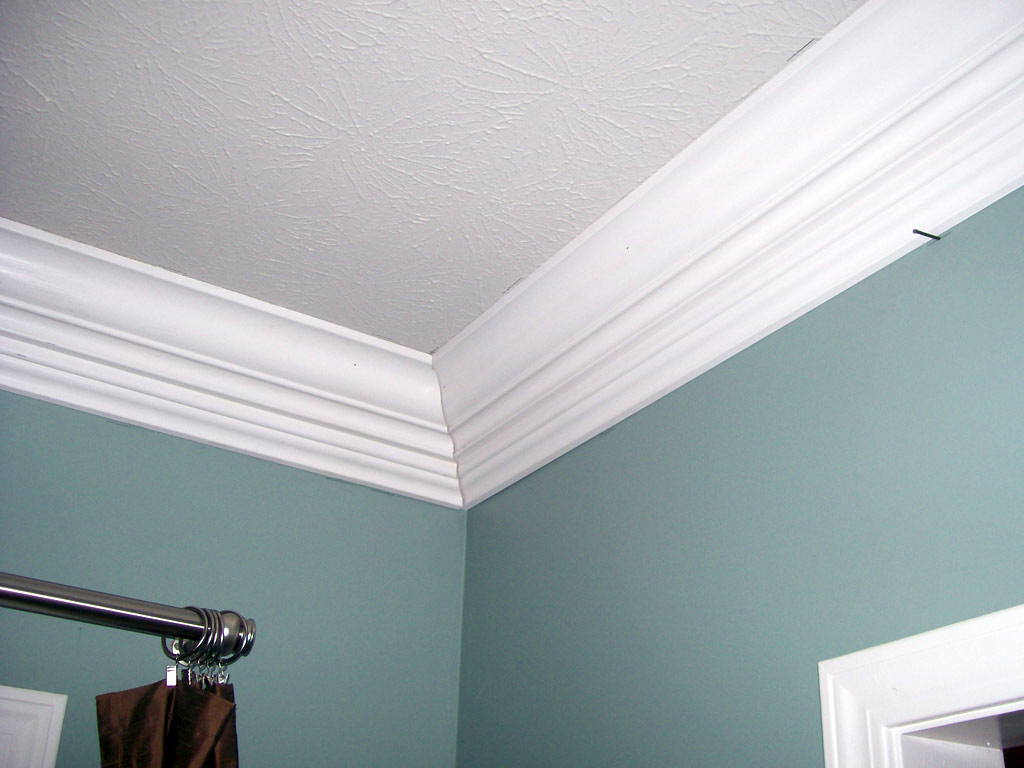Imagine transforming your home with an elegant touch that instantly elevates its character. Crown moulding is the secret weapon for adding a touch of grandeur to any space. Whether you’re a seasoned DIY pro or just starting out, this guide will unveil everything you need to know about this home improvement gem – from the types of moulding and installation tricks to expert design tips. Let’s explore the world of crown moulding, where style and sophistication meet!
Elevating Your Home: Choosing the Right Crown Moulding
Crown moulding. It’s that finishing touch that can make a room go from “blah” to “wow!” Think of it as the jewelry for your walls and ceilings, adding a touch of elegance and sophistication. Whether you’re going for a classic or contemporary vibe, crown moulding can elevate the look of any space. Let’s dive into everything you need to know about choosing, installing, and enjoying this timeless architectural detail.
Unlocking Style: From Simple to Grand
Crown moulding comes in an array of styles, each with its unique personality. Got high ceilings? Go bold with a larger, more ornate profile. For cozier spaces, a smaller, simpler moulding will do the trick.
And don’t forget about your room’s style! A sleek, minimalist moulding rocks in a modern setting, while intricate Victorian-inspired designs bring a touch of old-world charm. It’s all about finding the perfect match for your vision.
Materials: Finding the Right Fit
Choosing the right material for your crown moulding is key. Each option comes with its own set of perks:
| Material | Pros | Cons |
|---|---|---|
| Wood | Classic beauty, durable, stainable, customizable profiles | Can be pricey, may require extra care |
| MDF (Medium Density Fiberboard) | Affordable, smooth surface, easy to paint | Not as moisture-resistant as wood or polyurethane |
| Polyurethane | Lightweight, moisture-resistant, intricate designs | Can be less forgiving to work with than wood |
| Foam | Budget-friendly, easy to install, paintable | Less durable than other options |
DIY or Don’t? That is the Question!
Installing crown moulding might seem intimidating, but it’s a project many homeowners tackle themselves. With the right tools, a bit of patience, and a healthy dose of “can-do” spirit, you might be surprised at what you can achieve!
Accurate measurements are your best friend here! Miter cuts, which create those seamless corners, can be tricky but oh-so-satisfying when done right. There are tons of online tutorials and resources to guide you, and specialized tools like miter saws can make the process smoother.
Budgeting for Your Crown Jewel
Before you fall head over heels for a particular crown moulding, it’s wise to crunch some numbers.
- Material Costs: These can vary widely, from budget-friendly foam to premium hardwoods.
- Installation: If you’re not going the DIY route, factor in labor costs.
- Tools: You might need to invest in some tools like a miter saw, especially if you’re planning more DIY projects.
Where to Find Your Perfect Moulding
- Home Improvement Stores: Your local big-box stores offer a wide variety of crown moulding options, often with helpful staff to answer your questions.
- Specialty Lumberyards: For unique profiles and higher-quality wood mouldings, a lumberyard is the place to be.
Beyond Looks: The Power of Crown Moulding
While crown moulding undeniably ups the style factor, it also offers practical benefits:
- Seamless Transition: It cleverly disguises any gaps between walls and ceilings, creating a polished look.
- Height Illusion: Crown moulding can make a room feel taller and more spacious, especially when painted a lighter color than the walls.
- Increased Value: As a timeless architectural detail, crown moulding can boost your home’s value and appeal to potential buyers.
Moulding vs. Crown Moulding: Understanding the Difference
Alright, so you’re already familiar with the basics, but let’s dive a little deeper into the world of moulding, specifically that elegant touch known as crown moulding. Think of “moulding” as the general term – like saying “shoes” – while “crown moulding” is a specific type – like saying “sneakers.” It’s that decorative trim you often see where the wall gracefully meets the ceiling.
Now, crown moulding isn’t just there to look pretty (though it does that very well!). It’s a design multi-tasker! This type of trim can make a room feel grander, hide those little imperfections we all have (walls included!), and even boost your home’s value in the eyes of potential buyers. Talk about a win-win!
A World of Styles: Exploring Crown Moulding Options
Speaking of variety, crown moulding comes in more styles than a fashion show! From simple and sleek lines to those intricate designs that make you say “how did they do that?”.
- Cove moulding, for example, is all about those smooth curves, like a gentle wave.
- Ogee moulding? Now we’re talking curves with a bit of an edge – concave and convex.
- Dentil moulding reminds me of perfectly lined-up teeth, small and evenly spaced.
Material Matters: Choosing the Right Fit
Just like every room has its own personality, crown moulding comes in different materials to fit the vibe.
- Classic wood brings that timeless elegance and durability.
- MDF is like its budget-friendly cousin, and don’t worry, it’s tough stuff too!
- Plaster is the artist of the group, letting you create those jaw-droppingly detailed designs.
- Polyurethane – the lightweight champ, easy to install and ready to rock any color you can imagine.
DIY or Pro? You Decide!
Now, you might be thinking, “Installing crown moulding sounds like a job for the pros.” While it’s true that some intricate designs might require a specialist, a surprising number of homeowners tackle this project themselves! It’s totally doable with a bit of planning, the right tools, and a dash of patience.
Is Crown Moulding Still Popular?
So, you’re thinking about crown molding, huh? It’s a question a lot of people ask – is it still in style? Well, the truth is, it never really went out of fashion. It’s like that classic little black dress in your closet – always stylish, always elegant.
Timeless Elegance and Practical Benefits
Crown molding adds a touch of class, you know? It instantly elevates a room, making it feel more polished and put together. Plus, it has this magical ability to hide those pesky imperfections where the wall meets the ceiling. Let’s be honest, those gaps can be a bit of an eyesore!
Now, you might find that some areas are more into crown molding than others. Traditional homes, for instance, often feature those intricate, ornate moldings that scream “grand estate.” But don’t worry, modern homes haven’t abandoned the trend! They’ve just adapted it to their aesthetic, opting for simpler, cleaner lines that blend seamlessly with the minimalist vibe.
Versatility and Value: A Winning Combination
One of the reasons crown molding has stood the test of time is its versatility. It’s like the chameleon of home decor – it adapts to any style! And let’s not forget the practical benefits. Crown molding can actually increase your home’s value, especially if it’s well-crafted and complements the overall design.
Think of it this way: crown molding adds architectural interest without breaking the bank. It’s a relatively small detail that can have a big impact on the overall feel of your home. So, if you’re on the fence about it, I say go for it! You might just be surprised at how much you love it.
Easiest Crown Moulding to Install: A Beginner’s Guide
Okay, so you’re looking to add some pizzazz to your rooms with crown molding, but you don’t want the installation to turn into a DIY nightmare. We get it! Thankfully, some types of crown molding are way easier to handle than others.
Think of it like this: some materials are like working with cooked spaghetti (flexible and forgiving), while others are more like uncooked linguine (a little more rigid and prone to snapping).
Choosing the Right Material for Easy Installation
Let’s break down the easiest options:
-
PVC, Polyurethane, and Polyethylene: These materials are like the rockstars of easy installation. They’re super lightweight, which means less arm fatigue for you, and they’re flexible enough to bend around those slightly-less-than-perfect corners that every house seems to have. Plus, you can usually get away with cutting them using basic tools you probably already own.
-
Peel-and-Stick Foam: If you’re looking for the absolute simplest option, peel-and-stick foam molding might be your new best friend. It’s lightweight and incredibly easy to cut. The best part? No hammering required! Just peel off the backing and stick it on. Just keep in mind that foam molding might not have the same high-end look as some other materials.
Planning and Teamwork: Keys to Success
Now, remember that even with these easier options, a little planning goes a long way. Always measure twice, cut once, and don’t be afraid to ask for help if you need it. After all, a little teamwork can make any DIY project more fun!
When you think of all the different ways you can decorate a room using crown moulding, plain old wallpaper just won’t do! With decora outlets now available, you can forget about cheap plastic outlets and make even your light switches and outlets look their absolute best.
- How to Get Rid of Bermuda Grass: A Complete Guide to Removal and Prevention - April 24, 2025
- How to Get Rid of Bees Outside: A Humane and Effective Guide - April 24, 2025
- How to Get Rid of Ants in Your Car: A Complete Guide - April 24, 2025










